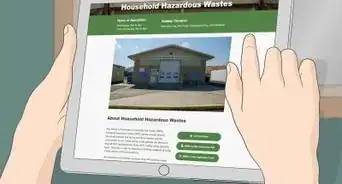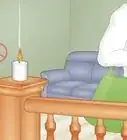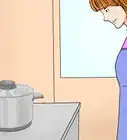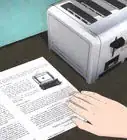This article was co-authored by wikiHow Staff. Our trained team of editors and researchers validate articles for accuracy and comprehensiveness. wikiHow's Content Management Team carefully monitors the work from our editorial staff to ensure that each article is backed by trusted research and meets our high quality standards.
wikiHow marks an article as reader-approved once it receives enough positive feedback. This article received 33 testimonials and 92% of readers who voted found it helpful, earning it our reader-approved status.
This article has been viewed 662,163 times.
Learn more...
Knowing how to use a fire extinguisher could save your life in an emergency. The key to putting out a fire with an extinguisher is to use the PASS strategy: Pull the pin, Aim the hose, Squeeze the lever, and Sweep the hose. However, before you use a fire extinguisher to put out a fire, it’s very important that you determine whether or not it’s appropriate for you to be fighting the fire, and whether or not you'll be able to put it out. If you don’t think you can fight the fire, or if you have any doubts, evacuate the building immediately and call the fire department.
Steps
Reacting to a Fire
-
1Instruct someone to call the fire department or call them yourself. Evacuate everybody from the building first. Tell somebody to call the fire department or emergency services once that person is safely outside. Even if you're able to extinguish the fire on your own, it’s best to have the fire department on the way in case something happens.[1]
- When the fire department arrives, they can check that the fire has been extinguished properly. Just because something looks safe does not necessarily mean it is.
-
2Stand with your back to an exit. Before you use a fire extinguisher to put out a fire, it’s important to take a couple safety precautions. Locate the nearest exit, and position yourself so your back is toward the exit. This will make it easy for you to escape if you have to leave quickly in an emergency.
- Keep your back toward the exit at all times so you know where it is and don’t get turned around or disoriented.
Advertisement -
3Move to the proper distance. Many fire extinguishers have a range of between 8 and 12 feet (2.4 to 3.7 m). Before discharging the extinguisher, move toward or away from the fire so you're standing 6 to 8 feet (1.8 to 2.4 m) (1.8 to 2.4 m) away.
- You can move closer once you start dousing the fire and the flames die down.
Putting Out a Fire
-
1Pull the pin. Every fire extinguisher has a pin inserted into the handle that prevents the fire extinguisher from being discharged by accident. Grab the ring and pull the pin out from the side of the handle.[2]
- Now that the extinguisher is ready to discharge, hold the device so the nozzle is pointed away from you.
- Fire extinguishers in non-residential or high/medium density residential areas may have a zip tie attached to the pin to let the fire department know that they've been used. The zip tie is made to be easily broken.
-
2Aim the hose at the base of the fire. Hold the lower handle lever (the carrying handle) with one hand and grab the hose or nozzle with the other hand. Point the hose directly at the base of the fire, because you have to put out the fuel that’s burning.[3]
- Do not aim the hose at the flames. This isn't the fuel source, and you won't get much progress.
- With carbon dioxide extinguishers, keep your hands away from the plastic discharge horn, which gets extremely cold.
-
3Squeeze the lever. To release the extinguishing agent, squeeze the two levers together with one hand while you aim the hose at the base of the fire with the other. Apply slow and even pressure when you squeeze the levers.[4]
- To stop discharging the extinguisher, release the levers.
-
4Sweep the hose from side to side. To extinguish all the fuel, slowly sweep the hose back and forth over the base of the fire as you discharge the extinguisher. Move closer to the fire as the flames die down.[5]
- Continue discharging until the fire goes out. This includes any glowing embers, which can reignite.
-
5Back away and repeat if the flames flare up. Watch the fire closely to ensure the flames don’t flare up again. Back away slightly if they do. Aim the hose again, squeeze the lever, and sweep the hose across the base of the fire again to extinguish it.[6]
- Never turn your back on a fire. You always want to be vigilant about where the fire is and what it’s doing.
-
6Leave immediately if you're unable to extinguish the fire. The average extinguisher will have enough agent inside to go for about 10 seconds. Back away and leave immediately if the fire isn't out when the extinguisher is fully discharged.[7]
- Call the fire department or emergency services if they haven't already been called.
-
7Replace or recharge your fire extinguisher as soon as possible. Some fire extinguishers are disposable, and these must be discarded once their discharged. Others are rechargeable, and can be refilled with agent and re-pressurized.
- Do not leave an empty fire extinguisher lying around, because somebody may try to use it in an emergency.
- If your extinguisher is rechargeable, do it as soon as possible. Don't put it off, otherwise you might be stuck without a working fire extinguisher during the next emergency.
Using a Fire Extinguisher Safely
-
1Get everybody out first. You shouldn’t try to tackle a fire on your own with a fire extinguisher unless you know everybody else is safely out of the building. Also, only proceed if you can safely fight the fire and have a clear escape route.[8]
- Once everybody else is out of the building and you’ve determined your exits, you can return to fight the fire.
-
2Use a fire extinguisher for small, contained fires only. Fire extinguishers are not meant to fight large or growing fires. Only attempt to fight a fire if the flames are shorter than you, and if the flames are contained in a small space. Evacuate immediately if the flames are taller than you, or if the fire is spreading and growing.[9]
- An example of a contained fire is a wastebasket fire. The fire is contained by the walls of the wastebasket and won't spread.
-
3Evacuate a room that’s filled with smoke. Never try to fight a fire on your own if the room is full of smoke. Smoke inhalation can lead to unconsciousness, and you'll be stuck in the room with the fire.[10]
- If there is lots of smoke in the room, cover your mouth and get down on the ground. Stay low to avoid the smoke and crawl out of the room to safety.
-
4Use the right fire extinguisher. Fire extinguishers are loaded with different dousing agents to fight specific classes of fires. Some types of extinguishers will be ineffective against certain classes of fires, while others could actually make the fire worse. Before trying to put out a fire, make sure you know the fire fuel, and only proceed if you have the right type of fire extinguisher.
- Class A: Suitable for cloth, wood, rubber, paper, various plastics, and regular combustible fires. The extinguishing agent is water or foam.
- Class B: Suitable for gasoline, grease, and oil fires. The extinguishing agent is a dry chemical or carbon dioxide. Extinguishers smaller than 6 pounds (2.72 kg) are not recommended.
- Class C: Suitable for energized electrical fires. The extinguishing agent is a dry chemical or carbon dioxide.
- Class D: Suitable for combustible metals. The extinguishing agent is a dry powdered chemical.
- Class K: Suitable for kitchen fires, including oil, grease, and fat. The extinguishing agent is a wet or dry chemical.
- Class ABC: This is an all-purpose fire extinguisher that works on class A, B, and C fires. The extinguishing agent is a dry chemical.
Community Q&A
-
QuestionHow do I dispose of a used extinguisher?
 Community AnswerTake it to a reputable fire extinguisher company and they will dispose of it for you or tell you how to do it yourself.
Community AnswerTake it to a reputable fire extinguisher company and they will dispose of it for you or tell you how to do it yourself. -
QuestionFrom what distance should I use the fire extinguisher?
 Community AnswerDepending on the size of the extinguisher, a distance of about 6-8 feet would work.
Community AnswerDepending on the size of the extinguisher, a distance of about 6-8 feet would work. -
QuestionHow far away should I be while using fire extinguisher?
 Community AnswerIt depends on the size of extinguisher. You will typically need to be between 6 and 8 feet away.
Community AnswerIt depends on the size of extinguisher. You will typically need to be between 6 and 8 feet away.
References
- ↑ http://www.fireextinguishertraining.com/en/rules.html
- ↑ https://www.osha.gov/SLTC/etools/evacuation/portable_use.html
- ↑ http://www.fire-extinguisher101.com/using.html
- ↑ http://www.nfpa.org/public-education/by-topic/fire-and-life-safety-equipment/fire-extinguishers
- ↑ http://www.fire-extinguisher101.com/using.html
- ↑ http://www.artofmanliness.com/2013/01/23/how-to-use-a-fire-extinguisher/
- ↑ https://www.osha.gov/SLTC/etools/evacuation/portable_use.html
- ↑ http://www.nfpa.org/public-education/by-topic/fire-and-life-safety-equipment/fire-extinguishers
- ↑ http://www.artofmanliness.com/2013/01/23/how-to-use-a-fire-extinguisher/
About This Article
To use a fire extinguisher, start by grabbing the small ring on the handle and pulling on it to remove the pin. Then, aim the hose at the base of the fire and squeeze the 2 levers at the top of the extinguisher together to release the extinguishing agent. Sweep the hose from side to side while continuing to point the hose at the base of the fire. If the extinguisher runs out of agent and the fire is still going, leave immediately. To learn important fire extinguisher safety tips, keep reading.

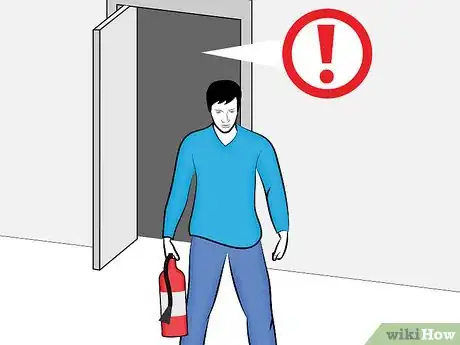
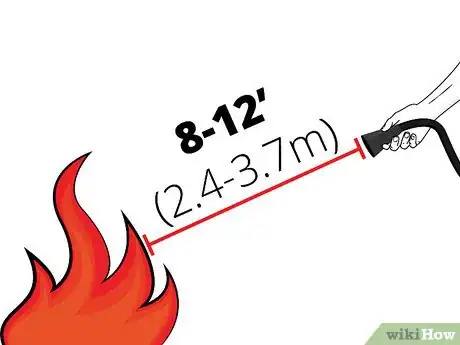
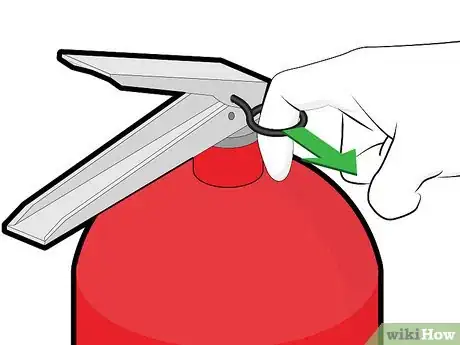
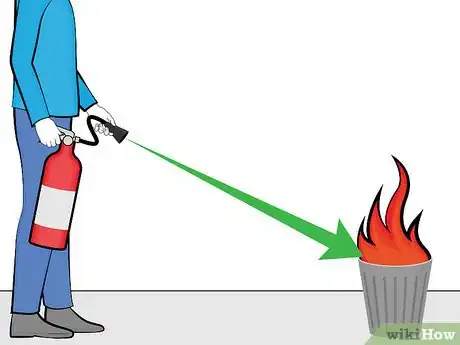
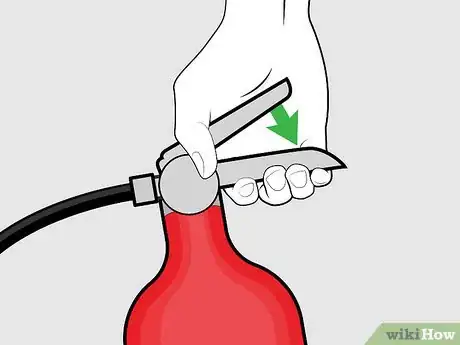
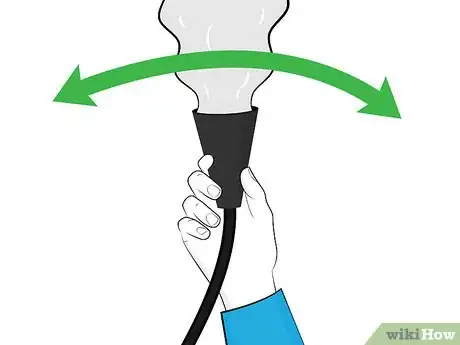
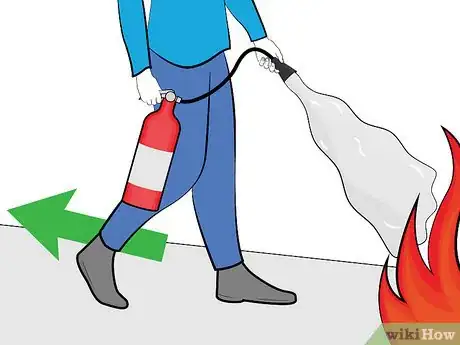

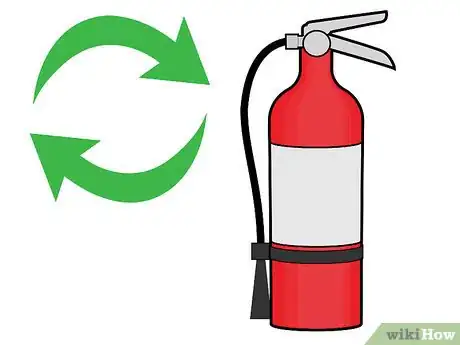


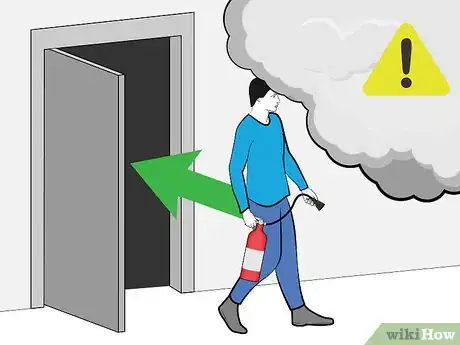
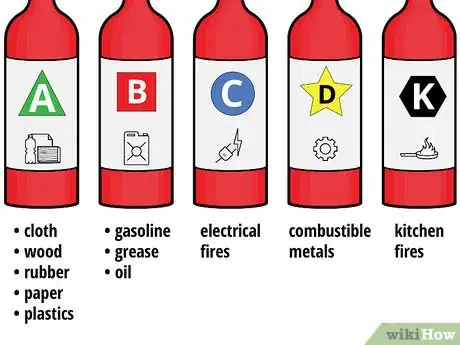
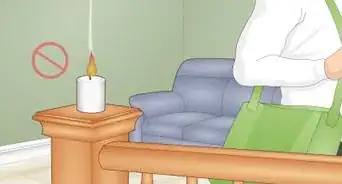
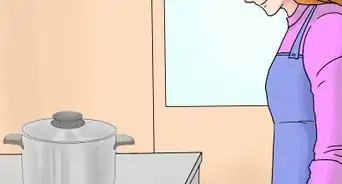
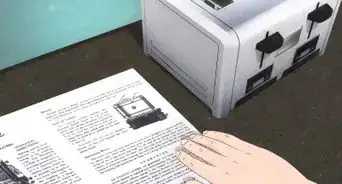
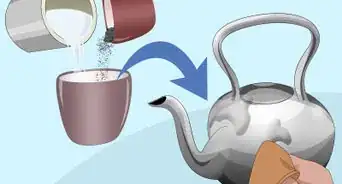

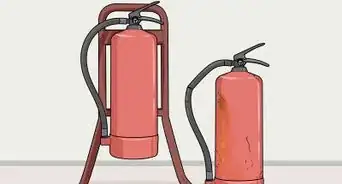
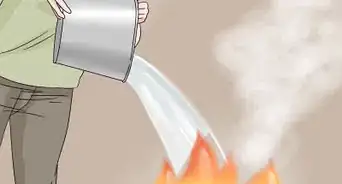

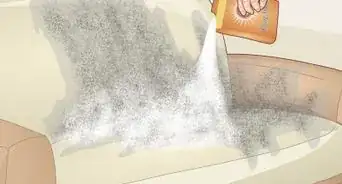

-Step-11-Version-2.webp)
